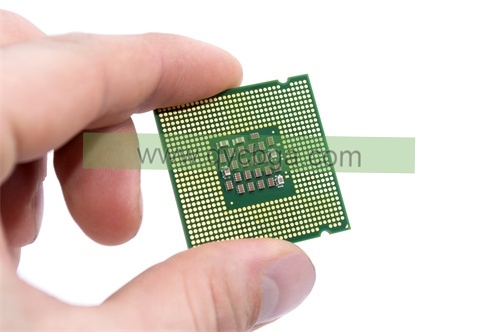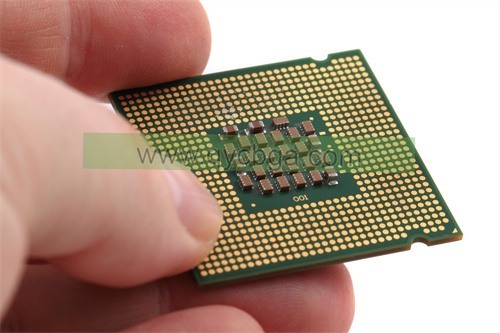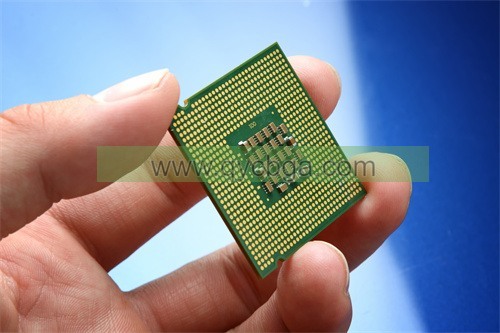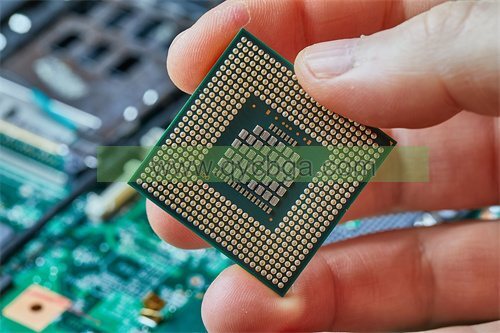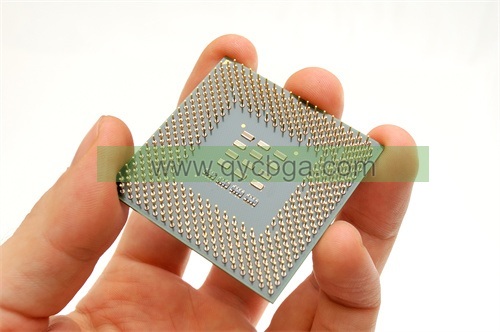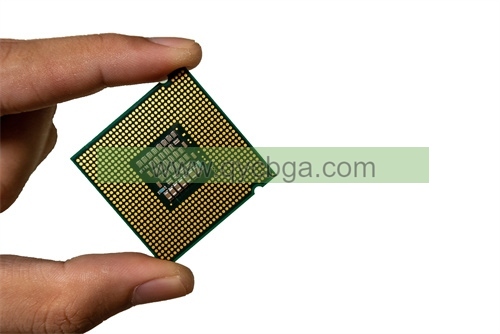ワイヤーボンディング基板とは?
ワイヤーボンディング基板メーカー,半導体パッケージングに欠かせない部品であるワイヤボンディング基板, チップの取り付けと細いワイヤによる電気接続の物理的基盤を提供. これらの基板は、ワイヤボンディングプロセスをサポートするように設計されています, 金やアルミのワイヤーボンディングなど, これは、半導体ダイを基板のコンタクトパッドに接続します. 主な特性には、高い熱伝導率が含まれます, 堅牢な機械的強度, 信頼性の高い性能を確保するための優れた電気絶縁性. 通常、セラミックなどの材料で作られています, 有機ラミネート, またはシリコン, ワイヤボンディング基板は、デバイスの動作に伴う熱的および機械的ストレスとの互換性のために選択されます. 自動車から電気通信まで、さまざまなアプリケーションで一般的に使用されています, これらの基質は、効率的な, 電子アセンブリの費用対効果の高い製造, 最終用途環境での耐久性と機能性の確保.
ワイヤボンディング基板とは、半導体パッケージにおけるワイヤボンディングプロセスのベースまたは基盤として使用される材料を指します. ワイヤボンディングは、集積回路の組み立てに使用される技術です (ICの) ここでは、チップとパッケージの間、またはチップ自体の異なる部分間で電気的な接続を行うために細いワイヤが使用されます.
基板は、半導体チップが実装されるプラットフォームとして機能します, また、チップの電気的接続と機械的サポートを提供します. 基板材料は良好な導電性を持っている必要があります, 熱伝導率, 半導体デバイスの信頼性の高い性能を確保するための機械的特性.
ワイヤボンディング基板に使用される一般的な材料には、次のものがあります:
- セラミック基板: アルミナなどの窯業 (Al2O3) そして 窒化アルミニウム (AlNの) は、その優れた熱伝導率と機械的強度のために広く使用されています.
- 有機基質: FR-4のような材料 (ガラス繊維強化エポキシラミネートの一種) また、ポリイミドは、低コストで加工が容易なため、一部の用途では基板として使用されています.
- シリコン基板: シリコンウェーハは、ワイヤボンディングの基板としても使用できます, 特にMEMSでは (微小電気機械システム) シリコンベースのセンサーまたはアクチュエーターとの統合が必要なアプリケーション.
基板材料の選択は、アプリケーションの特定の要件を含むさまざまな要因によって異なります, オペレーティング環境, コストに関する考慮事項, と製造プロセス.
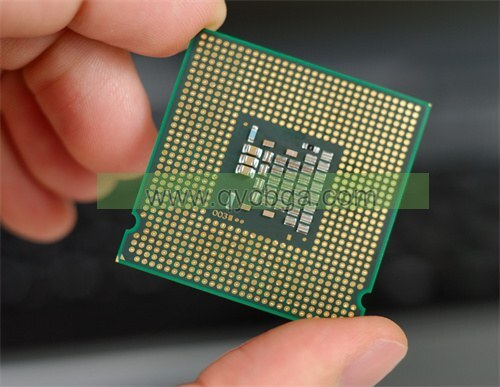
ワイヤーボンディング基板メーカー
ワイヤボンディング基板設計リファレンスガイド.
ワイヤボンディング基板の設計には、電気的性能など様々な要素を慎重に考慮する必要があります, サーマルマネジメント, 機械的安定性, と製造可能性. ただし、ワイヤボンディング基板設計に関する包括的なリファレンスガイドは1つではありません, このプロセスでエンジニアや設計者を支援するためのリソースやガイドラインがいくつかあります. ここでは、考慮すべき重要なポイントをいくつか紹介します:
- 電気的性能: 信号損失とインピーダンスの不一致を最小限に抑えるために、基板材料が良好な導電性を持っていることを確認してください. ボンドパッドとトレースのレイアウトは、信号の歪みとクロストークを最小限に抑えるために最適化する必要があります.
- サーマルマネジメントt: 半導体デバイスから発生する熱を効率的に放散するために、熱伝導率の高い基板材料を選択してください. サーマルビアとサーマルパッドを基板設計に組み込むことで、熱放散を強化できます.
- 機械的安定性: 基板は、半導体チップに適切な機械的サポートを提供し、取り扱いおよび操作中の機械的ストレスに耐える必要があります. 熱膨張係数などの要因を考慮します (CTEの) 基板とチップのマッチング, 基板材料の機械的強度.
- パッケージのサイズとレイアウト: 半導体デバイスの要件と選択したパッケージング技術に基づいて、基板のサイズと形状を決定します (例えば。, リードフレーム, フリップチップ, ボールグリッドアレイ). ボンドパッドのレイアウトを最適化, トレース, 寄生容量と寄生インダクタンスを最小限に抑えるためのその他のコンポーネント.
- 製造可能性: 製造と組み立てが容易な基板の設計. 基板材料と標準的な製造プロセスとの適合性などの要素を考慮してください, 製造施設の利用可能性, そして生産コスト.
- 確実: 基板設計が目的のアプリケーションの信頼性要件を満たしていることを確認します. 信頼性テストと解析を実施して、ボンディングワイヤ疲労などの潜在的な故障モードを特定します, 基板の層間剥離, はんだ接合部の故障.
- 業界標準とガイドライン: 基板設計の業界標準とガイドラインを参照してください, JEDECのような組織によって発行されたものなど (合同電子デバイス工学協議会) およびIPC (一般社団法人 エレクトロニクス産業をつなぐ協会).
- シミュレーションとモデリング: コンピューター支援設計を使用する (CADの) 電気をモデル化するためのソフトウェアとシミュレーションツール, 熱の, 基板設計の機械的挙動. これにより、設計を最適化し、製造前に潜在的な問題を特定することができます.
これらの要素を考慮し、利用可能なリソースとガイドラインを活用することによって, エンジニアや設計者は、性能を満たすワイヤボンディング基板の設計を開発できます, 確実, そして彼らの半導体デバイスの製造可能性要件.
ワイヤーボンディング基板に使用されている材料は何ですか?
ワイヤボンディング基板に使用される材料は、アプリケーションの特定の要件によって異なります, しかし、いくつかの一般的な材料には次のものがあります:
- セラミック基板: アルミナなどの窯業 (Al2O3) および窒化アルミニウム (AlNの) は、その優れた熱伝導率により、高出力および高周波アプリケーションで広く使用されています, 電気絶縁特性, そして機械安定性.
- 有機基質: FR-4などの有機材料 (ガラス繊維強化エポキシラミネートの一種), ポリイミド, とBT (ビスマレイミドトリアジン) 樹脂は一般的に低- 低コストのため、ミッドレンジのアプリケーションへ, 柔軟性, そして処理の容易さ.
- シリコン基板: シリコンウェーハは、特定のアプリケーションで使用されます, 特にMEMSにおいて (微小電気機械システム) デバイス, シリコンベースのセンサーまたはアクチュエーターとの統合が必要な場合.
- 金属基板: 銅などの金属, アルミニウム, また、銅合金が基板として使用されることもあります, 特に、熱伝導率が重要な考慮事項である高出力アプリケーションでは.
- ガラス基板: ホウケイ酸ガラスなどのガラス材料は、高い電気絶縁性と熱安定性が求められる特殊な用途で使用されています.
基板材料の選択は、電気的および熱的性能要件を含むさまざまな要因によって異なります, 機械的安定性, コストに関する考慮事項, 製造プロセスとの互換性. 基板材料自体に加えて, はんだ合金などの他の材料, 接着剤, また、ダイアタッチ材料は、半導体チップと基板との間に信頼性の高い電気的接続を作成するために、ワイヤボンディングプロセスでも使用されます.
ワイヤーボンディング基板はどのように製造されていますか?
パッケージ・オン・パッケージ (ポップ) 基板は、基板製造を含む一連のプロセスを通じて製造されます, 集会, とパッケージング. ここでは、POPパッケージ基板の典型的な製造方法の概要を示します:
- 基板製造:
– 基板材料選定: 最初のステップは、POPパッケージの要件に基づいて適切な基板材料を選択することです, 電気的性能などの要因を考慮する, サーマルマネジメント, そして機械安定性. 一般的な基板材料には、有機基板が含まれます (例えば。, FR-4, ポリイミド) およびセラミック基板 (例えば。, アルミナ, 窒化アルミニウム).
– 基質調製: 選択した基板材料は、後続の層とコンポーネントの適切な接着を確保するために、洗浄および表面処理プロセスによって製造用に準備されます.
– 積層: 有機基板用, 基板材料の複数の層を一緒にラミネートして、多層基板構造を作成できます. このプロセスでは、熱と圧力を加えて層を結合します.
- 回路パターニング:
– フォトレジスト塗布: フォトレジスト材料の層が基板表面に塗布されます.
– 露出と開発: 基板はフォトマスクを通して紫外線にさらされます, これは、目的の回路パターンを定義します. 次に、露光したフォトレジストを現像して、未露光領域を除去します, パターン化されたレジストを残す.
– エッチング: 基板はエッチングプロセスを受けます (例えば。, 化学エッチング, プラズマエッチング) 露出した領域から材料を取り除くには, 目的の回路パターンの作成.
- 表面仕上げ:
– メタライゼーション: 金属層 (通常、銅) は、スパッタリングや電気めっきなどのプロセスを通じて基板表面に堆積し、導電性トレースとパッドを形成します.
– 表面処理: ソルダーマスク塗布や表面仕上げなどの表面処理プロセス (例えば。, エニグ – 無電解ニッケル浸漬金) はんだ付け性を高め、回路を保護するために適用されます.
- コンポーネントアセンブリ:
– ダイアタッチ: 半導体チップは、エポキシ系接着剤やはんだペーストなどのダイアタッチ材料を用いて基板に貼り付けます.
– ワイヤボンディング: ワイヤボンディング技術 (例えば。, ボールボンディング, ウェッジボンディング) 半導体チップと基板との間に電気的接続を作成するために使用されます.
– カプセル化: 組み立てられたコンポーネントは、湿気や機械的ストレスなどの環境要因から保護するために、成形コンパウンドでカプセル化されています.
- テストと検査:
– 各種電気, メカニカル, また、POPパッケージ基板の品質と信頼性を確保するために、目視検査を実施しています.
- 最終包装:
– 品質管理試験合格後, POPパッケージ基板は、顧客に配布したり、さらに電子デバイスに組み立てたりするためにパッケージ化され、ラベル付けされます.
これらの製造プロセス全体を通じて, POPパッケージの基板が信頼性と性能に必要な仕様と基準を満たしていることを確認するために、厳格な品質管理対策が実施されています.
ワイヤーボンディング基板の応用分野
ワイヤーボンディング基板は、次のようなさまざまな分野での用途があります。 集積回路 (ICの) または半導体デバイスが使用されます. ワイヤボンディング基板の一般的なアプリケーション分野には、次のようなものがあります:
- 家電: ワイヤボンディング基板は、スマートフォンなどの家電製品に広く使用されています, 錠剤, ラップトップ, およびウェアラブル. これらの基板は、これらのデバイスで使用される半導体チップの電気的接続と機械的サポートを提供する上で重要な役割を果たします.
- カーエレクトロニクス: 自動車エレクトロニクス, ワイヤーボンディング基板は、エンジン制御ユニットなどの部品に利用されています (ECU(エキュエート), インフォテインメントシステム, 先進運転支援システム (ADASの), と各種センサー. これらは、過酷な動作条件で信頼性の高い性能を確保するのに役立ちます, 温度変化や機械的振動を含む.
- 電気通信: ワイヤボンディング基板は、ルーターなどの通信機器に採用されています, スイッチ, 基地局, および光ネットワーキングデバイス. これらの基板は、半導体チップの相互接続を容易にし、高速データ伝送をサポートします.
- 産業用アプリケーション: 産業機器や機械は、制御システムにワイヤボンディング基板を組み込むことがよくあります, 監視デバイス, ロボティックス, および自動化システム. これらの基板は、産業環境に必要な電気的接続性と耐久性を提供します.
- 医療機器: ワイヤーボンディング基板は、医療機器で重要な役割を果たします, 診断機器を含む, 患者モニタリングシステム, イメージングデバイス, および埋め込み型医療機器. 医療用途で使用される半導体部品の信頼性と性能を確保するのに役立ちます.
- 航空宇宙・防衛: 航空宇宙および防衛用途, ワイヤーボンディング基板は、アビオニクスシステムで利用されています, 衛星通信システム, レーダーシステム, およびミサイル誘導システム. これらの基板は、信頼性に対する厳しい要件を満たす必要があります, 耐久性, そして極限環境でのパフォーマンス.
- エネルギーシステム: ワイヤボンディング基板は、パワーインバーターなどのエネルギー関連アプリケーションに採用されています, ソーラーインバーター, 風力タービンコントローラー, およびバッテリー管理システム. これらは、エネルギー生成に使用される半導体部品の電気接続を提供します, 換算, およびストレージシステム.
- MEMSデバイス: 微小電気機械システム (MEMSの) デバイス, 機械部品と電気部品を1つの基板に統合します, 多くの場合、ワイヤボンディング基板を利用します. これらのデバイスは、幅広いアプリケーションで使用されています, 車載用センサーを含む, バイオメディカルセンサー, および家庭用電化製品.
全, ワイヤーボンディング基板は、さまざまな業界で重要な役割を果たす汎用性の高いコンポーネントです, 多様なアプリケーションにおける半導体デバイスの信頼性の高い動作を実現. その設計と材料は、各アプリケーションの特定の要件を満たすように調整されています, 最適なパフォーマンスと信頼性の確保.
ワイヤーボンディング基板の利点は何ですか?
ワイヤボンディング基板にはいくつかの利点があります, さまざまな業界で半導体パッケージングに人気のある選択肢となっています. 主な利点には、次のようなものがあります:
- 費用対効果: ワイヤーボンディング基板は、フリップチップボンディングやウェーハレベルパッケージングなどの他のパッケージング方法と比較して、多くの場合、費用対効果が高くなります. ワイヤボンディング基板に使用される材料, 有機基板やセラミック基板など, 一般的に、他のパッケージング方法で使用されるシリコンウェーハのような材料よりも安価です.
- 柔軟性: ワイヤボンディング基板は汎用性が高く、幅広い半導体デバイスに対応可能です, ・・集積回路を含む (ICの), ディスクリートコンポーネント, および微小電気機械システム (MEMSの) デバイス. また、さまざまなワイヤボンディング技術にも対応できます (例えば。, ボールボンディング, ウェッジボンディング) およびボンディング材料 (例えば。, アルミニウム, 金).
- 確実: ワイヤボンディング技術は何十年にもわたって広く使用されており、信頼性の実績があります. 組み立てプロセス中に形成されるワイヤボンドは、半導体デバイスと基板との間に堅牢な電気的接続を提供します, 優れた機械的強度と熱安定性を備えています.
- 小型化: ワイヤボンディング基板は、チップサイズの小型化やファインピッチボンディングに対応できるため、電子機器の小型化が可能. これは、家電製品などのアプリケーションで特に重要です, コンパクトなフォームファクタが必要な場合.
- サーマルマネジメント: 特定の種類のワイヤボンディング基板, セラミック基板など, 優れた熱伝導率を提供, 半導体デバイスからの放熱を補助. これにより、最適な動作温度を維持し、デバイスの全体的な信頼性を向上させることができます.
- 統合の容易さ: ワイヤボンディング基板は、既存の製造プロセスやインフラストラクチャに簡単に統合できます, 半導体パッケージングに便利な選択肢です. また、他の包装技術と組み合わせることで、それぞれの手法の長所を活かしたハイブリッドな紙容器を作ることもできます.
- 複数のデバイスとの互換性: ワイヤボンディング基板は、1つの基板上に複数の半導体デバイスを収容できます, さまざまな機能を1つのパッケージに統合可能. これにより、システム設計が簡素化され、電子アセンブリの全体的なフットプリントを削減できます.
- 業界の標準化: ワイヤボンディング技術は、半導体業界で確立され、標準化されています, 基板設計のための広く受け入れられているガイドラインと仕様, 組立工程, 信頼性試験. これにより、異なるメーカーやアプリケーション間での一貫性と相互運用性が確保されます.
全, ワイヤボンディング基板は、費用対効果の高い魅力的な組み合わせを提供します, 確実, 柔軟性, 統合の容易さ, 幅広い半導体パッケージングアプリケーションに適した選択肢となっています.
ワイヤーボンディング基板の費用はいくらですか?
ワイヤボンディング基板のコストは、基板の材料などのいくつかの要因によって大きく異なります, 大きさ, 設計の複雑さ, 関連する製造プロセス, と注文数量. ここでは、ワイヤボンディング基板のコストに関する一般的な考慮事項をいくつか紹介します:
- 基板材料: 基板材料が異なれば、コストも異なります. 例えば, 有機基質 (例えば。, FR-4, ポリイミド) 一般的にセラミック基板よりも安価です (例えば。, アルミナ, 窒化アルミニウム) 材料費や製造工程の違いによるもの.
- サイズと複雑さ: より大きな基板または複雑なデザインの基板 (例えば。, 多層構造, 高密度相互接続) より多くの材料が必要で、追加の製造手順が必要になる場合があります, コストの上昇につながる.
- 製造プロセス: ワイヤボンディング基板の製造に関わる製造プロセス, 回路パターニングなど, メタライゼーション, 表面仕上げ, と組み立て, 全体的なコストに貢献する. 特殊な機器が必要なプロセスや、より労働集約的なステップを伴うプロセスは、コストを増加させる可能性があります.
- ボリュームディスカウント: 通常, 注文数量が多いほど、規模の経済によりユニットあたりのコストが低くなります. メーカーは、ワイヤボンディング基板の大量注文に対してボリュームディスカウントを提供する場合があります.
- カスタマイズ: カスタマイズされた基板設計または特定の要件 (例えば。, 厳しい公差, 特殊素材, 高度な機能) 標準的な既製の基材と比較して、追加費用が発生する場合があります.
- サプライヤーとロケーション: サプライヤーの選択とその場所も、ワイヤボンディング基板のコストに影響を与える可能性があります. 製造コストが低いサプライヤーや人件費の低い地域に拠点を置くサプライヤーは、より競争力のある価格を提供する可能性があります.
ワイヤーボンディング基板のコストは、半導体パッケージングの全体的なコストの1つの要素にすぎないことに注意することが重要です. 半導体チップのコストなどの他の要因, 組立作業, テスティング, 品質管理, また、間接費もパッケージ化されたデバイスの総コストに寄与します.
具体的な価格情報については, 基板のメーカーまたはサプライヤーに直接連絡し、要件に基づいて見積もりをリクエストするのが最善です, 基板材料を含む, 寸法, 量, および特別な考慮事項.
ワイヤーボンディング基板に関するFAQ
ワイヤーボンディング基板とは?
ワイヤボンディング基板は、半導体パッケージングにおけるワイヤボンディングプロセスのベースまたはベースとして使用される材料です. 半導体チップの電気的接続と機械的サポートを提供します.
ワイヤーボンディング基板に使用されている材料?
ワイヤボンディング基板に使用される一般的な材料には、セラミックスが含まれます (例えば。, アルミナ, 窒化アルミニウム), 有機基質 (例えば。, FR-4, ポリイミド), 珪素, 金属 (例えば。, 銅, アルミニウム), とガラス.
ワイヤーボンディング基板の利点は何ですか?
ワイヤボンディング基板の利点には、費用対効果が含まれます, 柔軟性, 確実, 小型化, サーマルマネジメント, 統合の容易さ, 複数のデバイスとの互換性, および業界の標準化.
ワイヤーボンディング基板の費用はいくらですか?
ワイヤボンディング基板のコストは、基板材料などの要因によって異なります, 大きさ, 複雑さ, 製造プロセス, ボリュームディスカウント, カスタマイズ, およびサプライヤー. 具体的な価格情報については、基板のメーカーまたはサプライヤーに問い合わせるのが最善です.
ワイヤーボンディング基板の用途は何ですか?
ワイヤボンディング基板は、集積回路が (ICの) または半導体デバイスが使用されます, 家電製品を含む, 自動車用電子機器, 電気通信, 産業用アプリケーション, 医療機器, 航空宇宙および防衛, エネルギーシステム, およびMEMSデバイス.
ワイヤボンディング基板はどのように製造されていますか?
ワイヤボンディング基板は、基板製造などのプロセスを通じて製造されます, 回路パターニング, 表面仕上げ, コンポーネントアセンブリ (ダイアタッチ, ワイヤボンディング, カプセル化), 試験と検査, そして最終的な包装.
ワイヤボンディング基板設計で考慮すべき点?
ワイヤボンディング基板の設計における重要な考慮事項には、電気的性能が含まれます, サーマルマネジメント, 機械的安定性, パッケージのサイズとレイアウト, 製造可能性, 確実, 業界標準とガイドラインの遵守, シミュレーションとモデリング.
ワイヤボンディング基板に関する詳細情報はどこで入手できますか?
ワイヤボンディング基板に関する追加情報は、技術文献に記載されています, 業界出版物, メーカーデータシート, 半導体パッケージングの専門家によるコンサルティング.
 FCBGAパッケージ基板メーカー
FCBGAパッケージ基板メーカー


